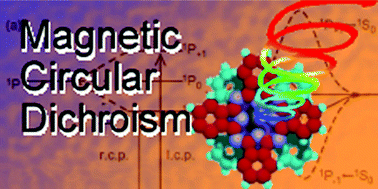Applications of magnetic circular dichroism spectroscopy to porphyrins and phthalocyanines
Abstract
Magnetic circular dichroism (MCD) spectroscopy has widely been applied to porphyrins and phthalocyanines since around 1970, in order to elucidate their electronic structures. In this mini-review, some representative MCD results from the author's laboratory over the past 30 years are introduced, together with recent results from other laboratories. MCD studies on the following monomeric species are included: D4h type, adjacent vs. opposite type diaromatic ring-fused, non-planar, and reduced and oxidized species, as well as species showing temperature-dependent MCD signals. In addition, one example illustrates the use of MCD as a probe for the distal histidine residue in myoglobin. Recent results on dimers and oligomers are also reported. In particular, it is confirmed that the spectra of cofacial eclipsed dimers do not reflect the molecular symmetry of the constituent monomers. The spectra of rare-earth sandwich dimers and trimers are definitively assigned. Using spectra of planar oligomers of porphyrins, it is reiterated that it is often dangerous to assign the absorption bands of chromophores based only on the results of molecular orbital calculations. Some examples show that MCD can give information on the relative size of the ΔHOMO (energy difference between the HOMO and HOMO−1) and ΔLUMO (energy difference between the LUMO and LUMO+1); for example, if ΔHOMO > ΔLUMO, the MCD signal changes from minus to plus in ascending energy.


 Please wait while we load your content...
Please wait while we load your content...